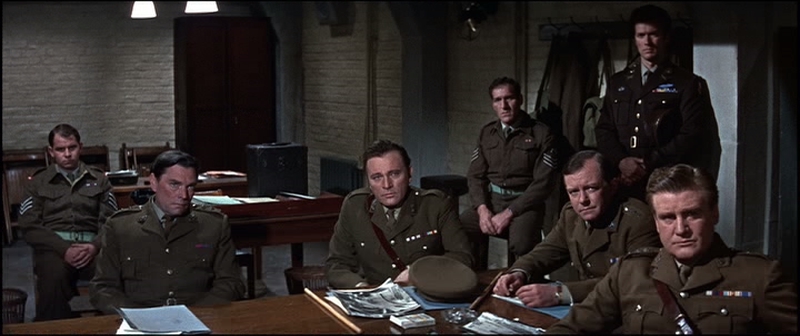WHERE EAGLES DARE REVISITED
August 2009 marked the release of Quentin Tarantino’s recent movie “The Inglorious Basterds” (pardon my language). This is a movie that makes use of Nazi-occupied Europe during World War Two as a backdrop. Well before its release, the movie drew fire and controversy. Aside from examining this movie, I will also examine certain other war movies and the actual war itself. I will try to compare the aforementioned to the movie itself.
We looked at Quentin Tarantino’s recent movie The Inglorious Basterds and the 1978 war movie from which it was supposedly inspired from. In the past, there had been several war movies, both fiction and non-fiction, depicting a handful of Allied soldiers conducting clandestine operations deep inside enemy territory. Unlike that Tarantino movie, these operatives did not kill the enemy by caving in their heads with a baseball bat or taking scalps.
World War Two had inspired the imagination of novels, movies, and TV. Among those inspired was a Scottish writer named Alistair MacLean. Many of his novels became movie adaptations. Among the movies was Where Eagles Dare.
The novel (and movie) was about an allied team infiltrating as German Alpine troops in the Austrian Alps. The team is comprised of six British and one American. Their mission is to rescue an American officer held captive by the Germans in a mountain castle. But the mission is not what it seems and there is deception about. The three main characters/heroes kill the Germans, whenever it is necessary or unavoidable through stealth and silence. Unlike Quentin Tarantino’s recent movie The Inglorious Basterds, the main characters do not kill Germans by using baseball bats and taking scalps.
The movie was made in the 1960s, at a time when war movies lost popularity due to the Vietnam War. Despite this, the movie did very well at the box-office. Part of the reason why this movie is way better than Tarantino’s recent movie The Inglorious Basterds are as follows:
· The movie had a solid cast led by Richard Burton and Clint Eastwood. The cast did not play over-the-top characters like in Tarantino’s recent movie. The cast stayed grounded and gave a very believable portrayal of the characters. Even Richard Burton kept his personal issues (he is a known alcoholic) in check.
· The movie had a good soundtrack, composed by Ron Goodwin, who also did the soundtracks for such movies as Battle of Britain, 633 Squadron, Submarine X-1, and Operation Crossbow.
· Certain scenes, especially those involving the cable cars, had that edge-of-your-seat-cliffhanger intensity.
· Half-way through the movie there was almost non-stop action, in which the main characters had to shoot their way out of the castle and make their way to the extraction with the Germans in hot pursuit.
Perhaps the obvious exaggeration is that the Germans were being killed off in large numbers. Since the end of the war, both the Germans and Japanese were convenient bad guy fodder for Hollywood. Granted, the Germans did lose the war. But they did not lose that badly. Since June 1944, the Germans inflicted heavy casualties on both the allies and the Soviets. Every battle was hotly contested.
Despite being a work of fiction, it is one of many model examples of how to make a war movie. The movie can be exciting, without being absurd.
One little footnote: The movie is available on DVD. But for the benefit of those reading this entry, I will treat you to the movie. This feature addition is only temporary, so enjoy it while you can. Even Tarantino cannot hold a candle to this classic and many others like it.
Feature movie:
http://www.youtube.com/view_play_list?p=3906E301DF1526C1

The team. Two of them will die. Four of them are Nazi agents. Guess which two of them are the good guys.
